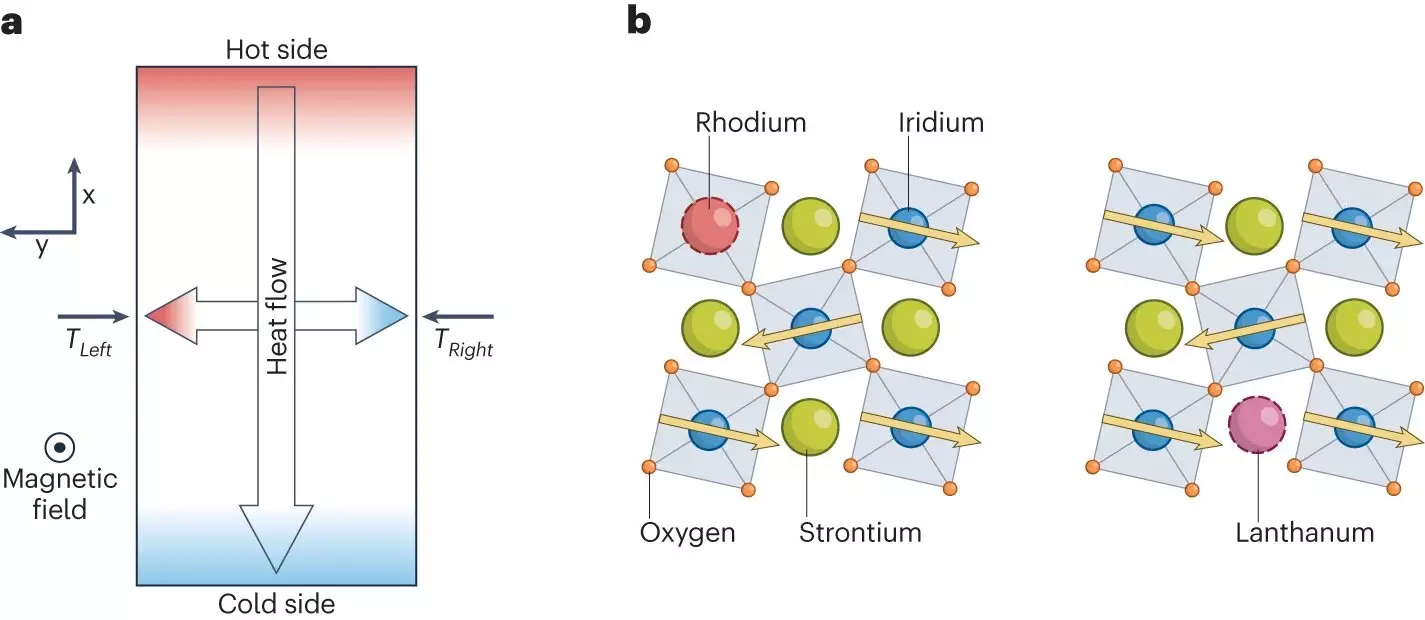The thermal hall effect (THE) is a mysterious physical phenomenon that arises when a material is subjected to a thermal current and a perpendicular magnetic field, leading to tiny transverse temperature differences. Despite being observed in various insulators, the underlying physics of this effect remains poorly understood. Researchers at Université de Sherbrooke in Canada have been delving into the mechanisms behind this intriguing effect in different materials.
Louis Taillefer, a co-author of a recent paper published in Nature Physics, explained that their research on THE in insulators began with the discovery of a significant THE in cuprate superconductors. This unexpected finding sparked interest among various theorists and led to further investigations into the heat carriers responsible for this effect in cuprate insulators.
Through their experiments, the team identified phonons as the heat carriers behind THE in cuprate insulators. The researchers sent the heat current perpendicular to the CuO2 planes, a direction only traversable by phonons, not electrons or spin-related excitations. This groundbreaking discovery shed light on the mechanism driving THE in cuprate insulators.
Inspired by their previous findings, the researchers began exploring the phonon-induced THE in other materials, such as the antiferromagnetic insulator Cu3TeO6 and the iridate Sr2IrO4. Their latest paper in Nature Physics focused on investigating the effect of impurities on THE in Sr2IrO4, revealing a surprising enhancement of the effect when Rh impurities were introduced.
The addition of Rh impurities caused a significant 70-fold increase in THE, suggesting that phonons scatter off impurities embedded in the antiferromagnetic environment of the material. This finding hints at a possible mechanism underlying THE in Sr2IrO4 and opens up new avenues for exploring the interactions between phonons and impurities in insulators.
Taillefer and his colleagues plan to continue their research into the THE effect, focusing on various other materials beyond Sr2IrO4. They aim to investigate whether materials that are candidates for quantum spin liquid states exhibit THE induced by exotic emergent excitations like Majorana fermions or spinons. Candidate materials for future studies include RuCl3 and Na2Cu2TeO6, with a focus on frustrated antiferromagnetic insulators, Kitaev materials, and cuprates. The quest to unravel the mystery of THE in insulators continues, with exciting possibilities for understanding the underlying physics of this intriguing phenomenon.
The study of the thermal hall effect in insulators presents a fascinating yet challenging frontier in condensed matter physics. Through innovative experimental techniques and theoretical insights, researchers are steadily unraveling the mysteries behind this phenomenon and paving the way for future discoveries in the field. As the journey of exploration continues, new insights and breakthroughs are sure to emerge, shedding light on the intricate mechanisms that govern THE in insulators.


Leave a Reply